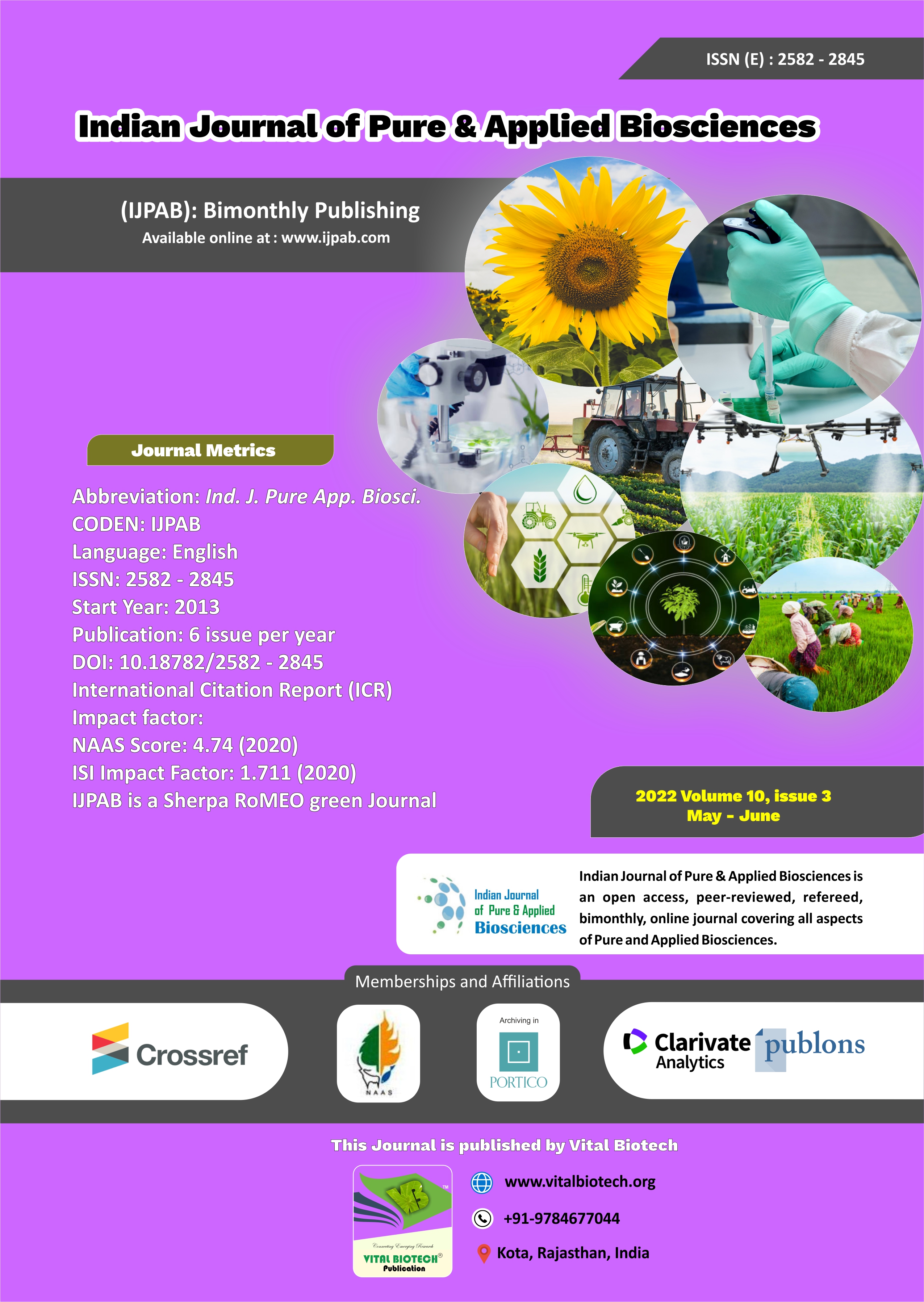-
No. 772, Basant Vihar, Kota
Rajasthan-324009 India
-
Call Us On
+91 9784677044
-
Mail Us @
editor@ijpab.com
Indian Journal of Pure & Applied Biosciences (IJPAB)
Year : 2022, Volume : 10, Issue : 3
First page : (24) Last page : (32)
Article doi: : http://dx.doi.org/10.18782/2582-2845.8899
Association of Bacillus Species with the Mid-gut of Anopheles arabiensis Mosquito Larvae in Sudan
Manhal Ahmed. Hamza1* and Sulieman Mohamed El-Sanousi2
1Faculty of Medical Laboratory Sciences, Department of Medical Microbiology,
Omdurman Islamic University, Omdurman, Sudan
2Faculty of Veterinary Medicine, University of Khartoum, Khartoum, Sudan
*Corresponding Author E-mail: manhalo26ahb@oiu.edu.sd
Received: 15.04.2022 | Revised: 31.05.2022 | Accepted: 11.06.2022
ABSTRACT
Background: According to the WHO, over 70% of the Sudanese population living in endemic areas are at risk of malaria. Malaria spreads by the female of the Anopheles species of mosquito. Several studies have characterized various bacteria in the mid-gut of Anopheles mosquitoes. Therefore, this study aimed to isolate bacterial strains, mainly Bacillus species from mid-gut of Anopheles arabiensis mosquito larvae.
Results: Fifty-three isolates were examined bacteriologically, showing all isolates were members of Bacillus species. The most prevalent Bacillus spp. Was B.thuringiensis and constituted (33%) of the total number of Bacillus isolates. Moreover, some of Bacillus spp. Which were isolated in this study: (23%) for bothB.cereus and B.sphaericus B.lentus (16%) B.brevis (13%), (10%) for both B.popilliae and B.mycoides and (6.7%) B.laterosporus.
Conclusion: In this study, we were able to isolate and identify Bacillus species related to the mid-gut of Anopheles arabiensis mosquito larvae.
Keywords: Microbial control, Bacillus species, Anopheles arabiensis, mid-gut, mosquito larvae, insectary Rearing.
Full Text : PDF; Journal doi : http://dx.doi.org/10.18782
Cite this article: Hamza, M. A., & El-Sanousi, S. M. (2022). Association of Bacillus Species with the Mid-gut of Anopheles arabiensis Mosquito Larvae in Sudan, Ind. J. Pure App. Biosci. 10(3), 24-32. doi: http://dx.doi.org/10.18782/2582-2845.8899


